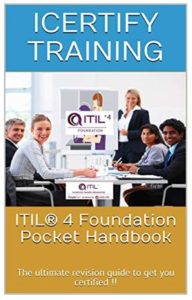Cloud-based services and ITIL 4

The world of IT is changing dramatically in recent years. Have you also noticed how your role, responsibilities and current work practices might be coming under increased pressure to change and work differently?
IT infrastructure and applications were bought and built by Organizations. This gave them a level of flexibility and control when it came to delivering IT services and applications to meet the needs of the business. However, change is the new norm and we are now in a time of global change.
The first wave of change occurred with organizations outsourcing more and more IT infrastructure and applications to the cloud. Advantages often cited for this move include cost reduction, decreased IT asset ownership and reduced complexity of IT.
The second wave of change is happening with organizations contemplating the concept of digital transformation, and then embarking on a digital transformation journey. These two waves represent significant changes which are now affecting how both the business and IT procure, develop, integrate, use and update business enabling IT services.
They are redefining how the IT function will design, develop, transition, operate and improve IT and business-related services.
Processes, functions, frameworks, models, and ways of working which served IT well in the past are not necessarily capable of supporting this new wave of change. They need to be modified, updated and adapted to the new technologies and models which are driving the new digital agenda.
A critical problem is, many organizations and IT professionals are not equipped with the skills to deal with this level of change. Nor do they have a clear understanding of the context of new digital technologies and domains such as cloud, big data, Internet of Things (IoT), blockchain, artificial intelligence (AI).
For ITSM professionals and the IT function to remain relevant in this new IT landscape, they need to fully understand what digital transformation is about. They also need to become leaders and trusted advisors in their organization on all matters relating to the cloud. This is because the cloud is the most common of these digital technologies being adopted today.
But a significant difficulty facing ITSM professionals is where to start. To help address this critical issue, topics covered in detail in a new white paper from Mark O’Loughlin looks at how new structures in ITIL 4 relate to using cloud services. These include:
- Impact of Cloud on IT Service Management & ITIL Lifecycle Processes
- ITIL 4 updated for a digital world
- Service Value System Considerations for Cloud
- Service Value Chains. Adapted for Cloud
- Value Stream Mapping
- Service Financial Management
- Service Level Agreements
- DevOps, Change Control and Velocity of Change
The organization is outsourcing certain elements, tasks, and responsibilities to the cloud service provider when moving to the cloud. This means the organization, and the IT function as the internal IT service provider, shift away from managing some of the technical components involved in delivering that service. After all, the cloud is a form of outsourcing. This shift changes the approach the organization and the IT function will need to take regarding areas such as IT process management, risk management, financial management, IT architecture, interoperability of systems, security and IT service management in general.
It is worth remembering that the rapid increase of cloud-based services does not change the fundamentals of what frameworks such as ITIL, or a movement such as IT service management, aim at. They want to achieve quality products and services which are fit for purpose, fit for use and aligned to the strategic goals and needs of the organization.
Cloud was born out of disruption and has caused much disruption to established norms. The latest developments in cloud and digital technologies are allowing organizations to develop new business models, thus pressurizing existing tried-and-tested businesses. However, the latest developments in cloud and digital technologies are also requiring organizations, IT professionals and the wider workforce to upskill, change, adapt and innovate like never before.
So, ask yourself, are you digitally ready?
Interested in The Ultimate Pocket Guide to get you ITIL 4 Foundation certification
